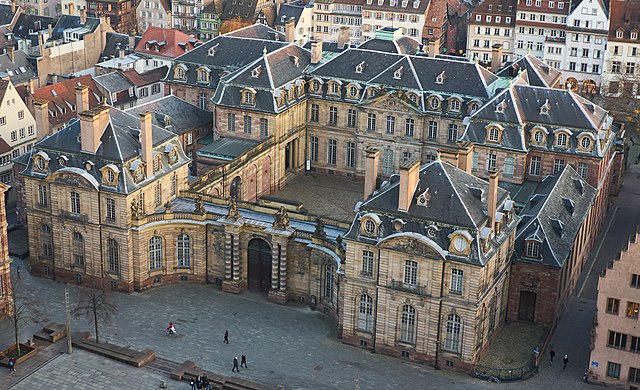Petite France, Strasbourg
La Petite France, in Alsatian dialect: Französel is the south-western part of the Grande Île of Strasbourg in Alsace in eastern France, the most central and characteristic island of the city that forms the historic center. The district is bounded to the north by the Quai de la Bruche (Brischstade), the Rue du Bain-aux-Plantes, the Place Benjamin-Zix and the Rue des Dentelles; to the east by the Rue du Pont-Saint-Martin, the Pont Saint-Thomas and the Mills footbridge; to the south by the Channel of Zorn-Mühle; to the west by the Covered Bridges.
The Maison des Tanneurs and Place Benjamin-Zix in the heart of the quarter
Former Huguenot tannery Bury, Rue des Dentelles 12
Blodergängel on the right, Quai de la Petite France (1898)
Blodergängel, Quai de la Petite France
The Grande Île is an island that lies at the historic centre of the city of Strasbourg in France. Its name means "Large Island", and derives from the fact that it is surrounded on one side by the main channel of the Ill river and on the other side by the Canal du Faux-Rempart, a canalised arm of that river. The Grande Île was named a UNESCO World Heritage Site in 1988. At the time, the International Council on Monuments and Sites noted that the Grande Île is "an old quarter that exemplifies medieval cities". Strasbourg was the first city to have its entire city center be listed as a World Heritage Site.
View of part of the Ponts Couverts, to the west of the Grande Île, from the Barrage Vauban
West front of Strasbourg Cathedral from the Place de la Cathédrale
Aerial view of the Palais Rohan from the cathedral's platform
Aerial view of St. Thomas' Church from across the Ill river








